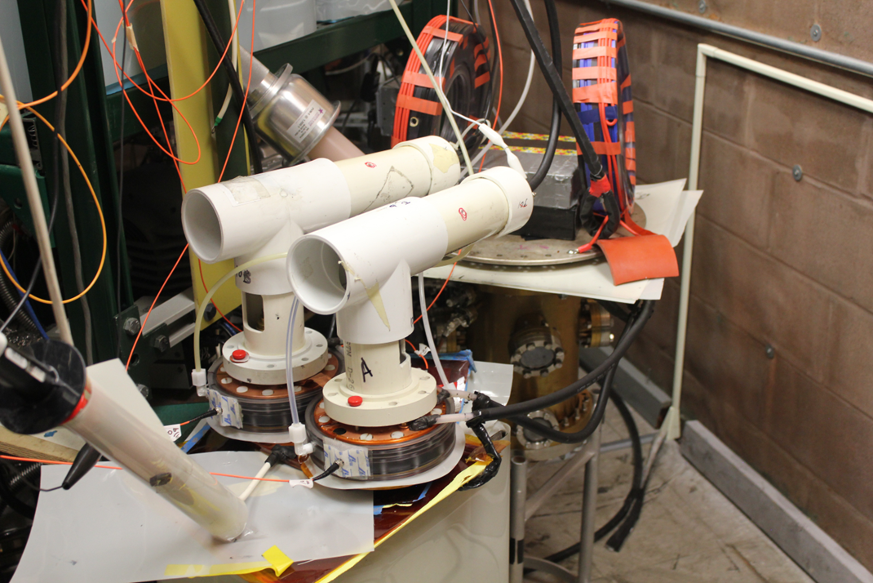
We have been tracking this for years as i do believe it is going to provide us with a power plant for both stellar and inter stellar travel. This is our starship engine. It converts fusion directly into direct currewnt and this can be directly tapped without using a heat engine.
This is the first test run of their upgraded switches and they look really good and trouble free.
We may well have a continous burn even this coming year though we still have not tackled the projected fuel using bismuth. I would like to see this properly funded once and for all.
Success! Switch Tests End, FF-2B to Fire in January
LPPFusion’s testing of switch designs has ended successfully this month with the achievement of a switch configuration that cures the problems we have encountered since 2019. The tests showed that we have eliminated random pre-fires, surface flashovers, late and non-synchronous firing, excessive soot production, excessive current oscillations and the notorious negative voltage pulse. The switch pair has demonstrated repeatable synchronous firing with 5 ns (billionths of a second.) While we were not able to meet our initial goal of 32 synchronous shots in a row, we’re convinced that is due to limitation of the test set-up, not of the switches. This success will lead to a resumption of firing in January of our FF-2B experimental fusion energy device.
In November, we demonstrated that the new dual switches could pass a greater current than the single switches. However, the greater current turned out to be too much for our spare test capacitor, which failed. Fortunately, we were able to locate a smaller, used but suitable capacitor within days and got back to testing after only a few weeks down. We upgraded our test bed to include coils of wire acting as a resistor. These coils limit the current and harmlessly dissipate energy (see Fig.1). We also attached old plasma focus electrodes into the circuit and pumped the vacuum chamber down to better simulate the actual firing conditions of the FF-2B device.
Our first week of firing with the upgraded testbed started tensely as we were plagued with loose connections and similar gremlins. But the coils functioned exactly as calculated to reduce the currents to safe levels for the capacitor. We were able to systematically test various combinations of design configurations suggested by Research Scientist Dr. Syed Hassan and Chief Scientist Eric Lerner.
On December 13th, we achieved success, with one configuration yielding 8 shots in a row with the switches firing with an average difference of only 5 ns, well within our goal of 10 ns. Examination of the switch interiors confirmed that the surface breakdowns that had plagued earlier switch designs, and the random pre-firing and soot production that they caused had disappeared. The cracking of the outer Lexan insulator which we had seen on earlier designs had also disappeared. There was also strong evidence that current oscillations were smaller than previously. However, oscillations are a product of the interaction of the switches and the entire device circuit, so we can’t be sure they have been reduced far enough for good functioning until we go back to firing FF-2B.

Figure 1. The upgrade testbed includes cable coils (red circles of wire) to limit current to safe levels for the new capacitor (barely visible under the switches in the foreground). The switches are the thick disks underneath the plastic housings of the trigger heads. The vacuum chamber is the golden-colored cylinder in the background.
We were at first concerned that we encountered some shots when only one of the pair of switches fired, after the initial good run of 8 shots. But we concluded that this was due to the non-optimized functioning of the external circuit and the lower level of current in the new set-up. When the current and voltage rose fast enough, both switches maintained the current throughout the pulse. However, when the current fell, due to variability in the external circuit, the current flickered out in one switch. We don’t see this being a problem when the switches are installed on FF-2B, as in that case a much faster rise in current and voltage always occurs. The situation is similar to that of a garden hose: at low pressure the stream will wiggle back and forth but at high pressure, it will be steady.
Based on the tests and the new switch configuration we have ordered parts for the full 16 switches to go on FF-2B. While waiting for the parts, we intend to carry out some control shots using the old single switches. We expect these tests in January and February will lead to advances in FF-2B’s performance and fusion yield, kicking 2023 off to a good start.
No comments:
Post a Comment